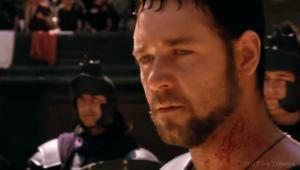Best Buy Follies

It's now two months later and the same demo is still there, though it's now using two Panasonic 50" plasmas instead of the earlier Samsung LCDs.
And it's still just as misleading. Even though one of the displays is labeled "high definition," and the other standard definition, they both come from the same SD DVD source. As before, they were using the HDTV Calibration Wizard DVD from Monster Cable and the ISF. But this time they were using the scene designed to help set the proper black level. (This image has little movement, so we're looking at an almost certain case of permanent burn-in!)
As before, the main difference between the two images was that the "standard definition" image was poorly adjusted. This time the blacks were badly crushed. Shadow details were much clearer in the "high definition" image. But the reason was that the set with the standard definition image had its brightness control (black level) set too low, not any fundamental difference between the standard definition and pseudo "high definition" images. In fact, no experienced observer would be fooled into thinking that either image was HD.
There was another difference as well, which I hadn't noticed earlier. The "standard definition" set was receiving either a composite or an S-Video signal on its Video 2 input (the backs of the display and player were not readily visible). The "high definition" set was receiving a component input from the same standard definition source!
The upcoming video calibration services from Best Buy will be performed in cooperation with the Imaging Science Foundation (ISF), which will train selected Best Buy personnel to do the work. But as I write this, the service has not yet been officially launched. So the demo I saw (which again was only making a sideways reference to calibration, far less prominent than the HD vs. SD hoopla) was not part of an official, approved promotion for the upcoming Best Buy/ISF calibration service.
Let's be generous here and call the shell game I've described an isolated case, restricted to an overeager or simply poorly informed store manager at a single Best Buy outlet. Perhaps that manager thinks that the component output, upconverted to 1080i, really is high definition! Wouldn't be the first time. If any of you find similar demos in your area, however, let us know.
Setting up a fair, up-front, in-store demo of SD vs. HD isn't trivial. You need two identical high definition players, one with an HD disc and the other with the SD version of the same film. Or, since this was, after all, a DirecTV kiosk, you could go with two DirecTV receivers, one set up for an SD station, the other the same material on HD. In the latter event you have less control over the programming. But with either case you have to monitor the display constantly to be sure the sources are still running and synchronized. Both TVs must be properly calibrated, with identical setups. You might also have to worry about the content rights police. Do you have clearance for public display of the material?
When Best Buy finally gets around to offering official calibration services, we'll be there to see how they handle it. It won't be easy. The differences that calibration makes won't be simple to demonstrate convincingly in a brightly lit store. In fact, since a calibrated image is often less bright and in-your-face than the usual in-store setup, a fair demo might actually turn the average Joe or Jane against calibration.
It will be interesting to see how this all pans out.





























































